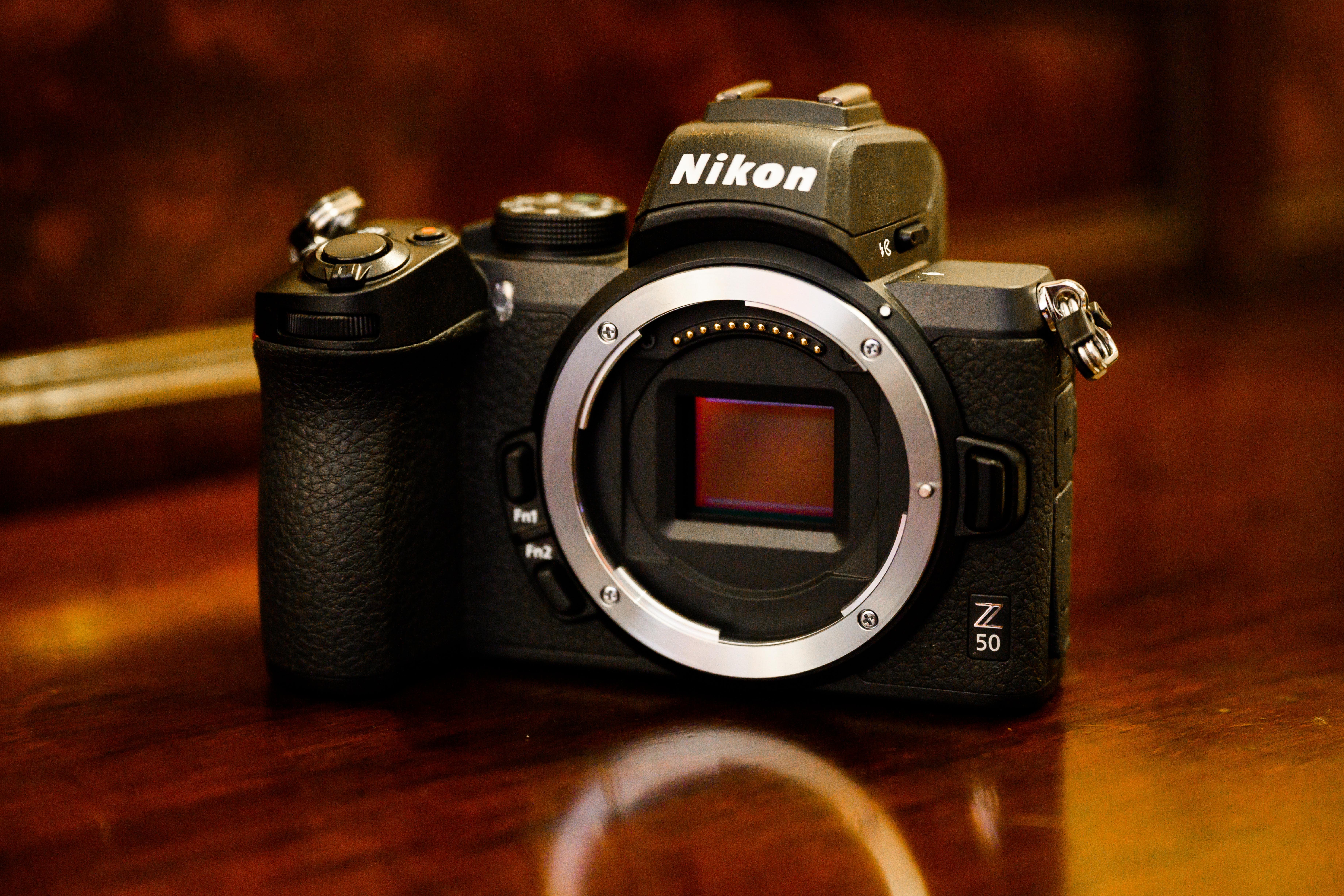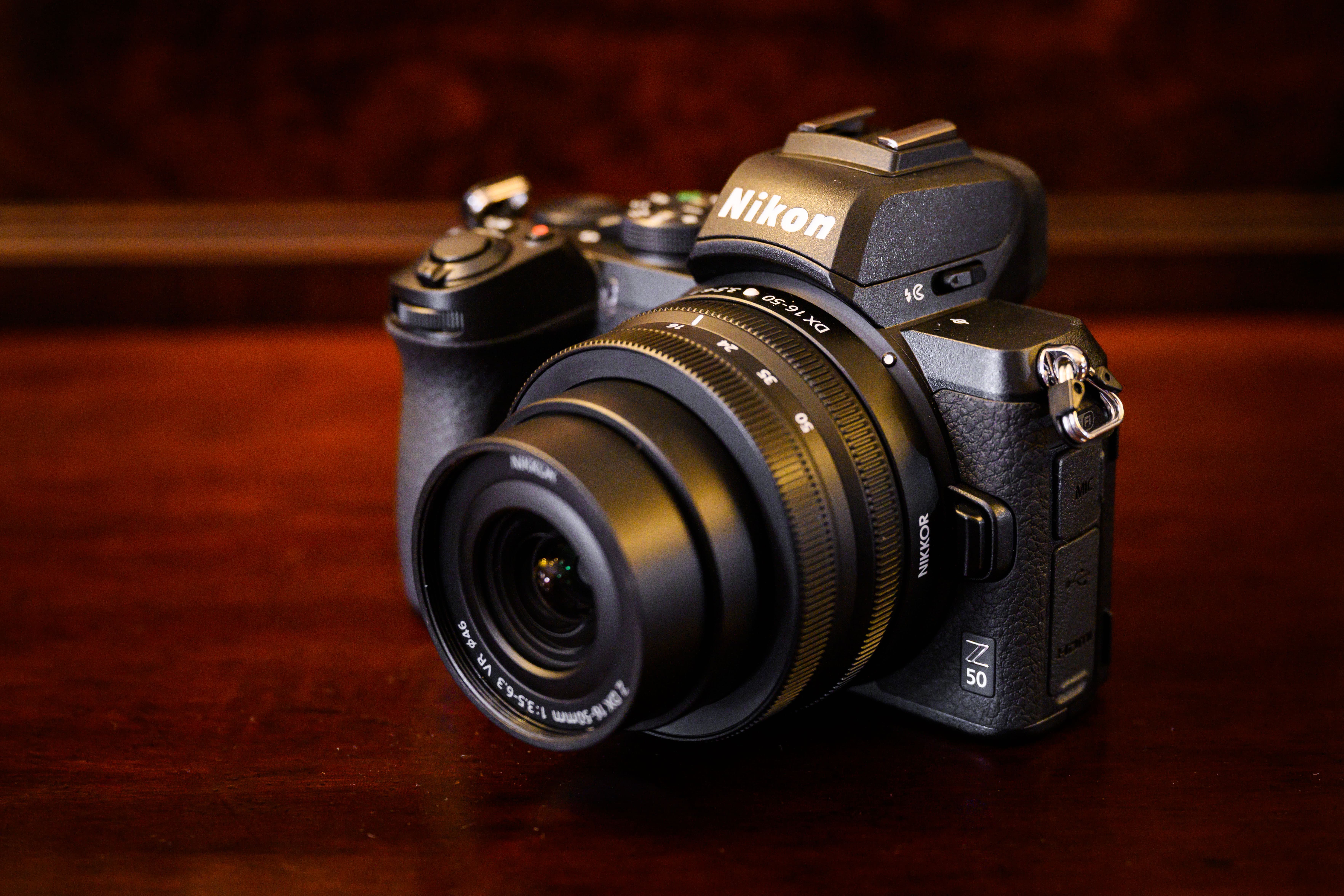During the recent launch of the Nikon Z 50, Amateur Photographer had the opportunity to speak to Rob Harmon (RH), Senior Commerical Planning Manager of Nikon UK and Neil Freeman (NF), Training Manager at Nikon School. During our interview we put a series of questions to both Nikon representatives to find out more about the company’s new DX-format mirrorless release – the Nikon Z 50.
Read our first impressions of the Nikon Z 50 in our hands-on, first look review
Interview conducted on the 9th October 2019 (15:00) at Charlotte Street Hotel, London
AP: What’s the rationale for using optical Vibration Reduction technology instead of IBIS?
RH: It’s all about the design consideration. With this body we’re certainly trying to pack a lot of features into a small, lightweight body and if we include IBIS into the body we’d have to sacrifice size and form factor. Also, I think users at this level don’t expect to see IBIS in an enthusiast-level product, especially at this price point. Taking all these factors into consideration, we decided optical VR was the way to go.
AP: Does Nikon intend to build up an extensive DX-format Z mount lens range?
RH: So today we announced the lens roadmap for the next three years, including both FX and DX format lenses. We always continue to review consumers needs and of course you can use the FTZ mount adapter with the Nikon Z 50, enabling users to use existing F mount lenses with the camera.
AP: Does the Z-mount force the camera design to be larger than Nikon might like?
RH: No, I think with the Nikon Z 50 we’ve proven you can have a very small but really great to use form factor body whilst including the Z mount.
AP: How long has the Nikon Z 50 been in the making?
RH: We can’t comment on our development decisions or development plans, but again we’re constantly reviewing the market in terms of what products we need positioned. What’s great about the Nikon Z 50 is that last year we went to market with the Nikon Z 6 and Nikon Z 7, and it’s really important for us to expand the Nikon Z user base, so that’s a key development consideration with this product. We want to engage in the lower price point level to get people into the system as a whole.
AP: What are Nikon’s plans for its DX-format DSLR range now the Z 50 has arrived?
RH: Our strategy is to run both systems (DSLR & Mirrorless) alongside each other. There are advantages of each and there are still users who prefer using an optical viewfinder and having the longer battery life you get with a DSLR camera. A lot of people are moving to mirrorless for video functionality and the size of the product. Our strategy is to absolutely run both products alongside each other.

The Nikon Z 50 will cost £849 (body only) when it goes on sale on the 7th November
AP: The launch of the Nikon Z 50 suggests we may see cameras arrive above and below it. Can you comment?
RH: We’re trying to expand the Z users base as much as we can and we’ll continue to develop products across the whole range. I can’t comment specially on what we’re developing into, but we are absolutely engaged in both systems and our strategy hasn’t changed in that we’re focusing closely on mid to high end product development.
AP: How important was it to hit a price point under £1000 with this first DX-format product?
RH: It was certainly a consideration. The amount of spec we have in the camera for the price makes it a seriously attractive proposition. We inherit a lot of the feature set from the Nikon Z 6 and based on the target market we’re looking at – the type of hobbyists who are looking to upgrade from their D3000 or D5000-series, but also people for whom it might be their first camera, being affordable is a very important characteristic and I think we’ve managed to achieve that with this camera.
AP: What’s the reason for not including USB Type-C?
NF: We’re trying to pack a lot of features into a very small form factor. Going for bigger USB ports means we have to make the camera larger so it all comes back to the engineering decisions about making a very small, very lightweight portable camera.
AP: What’s the thinking behind the permanent touch buttons on the screen?
RH: Again, it goes back to the target user group. Having the touch buttons on the back means we can cut down on the number of buttons on the back of the camera. They’re very accessible and easy to use. Users get easy access to the ‘i’ menu too where you can adjust all of your settings easily in-camera. Having an easy to use camera in a small form factor is really very important.
NF: If I can add to that, the camera lends itself to one-handed operation. If you’re coming from a smartphone you’ll be used to touchscreen functionality. Touch buttons are familiar and they’re easy to use.
AP: One limitation when the screen is flipped into selfie mode is that it can be easily blocked by a tripod head or mount. What’s Nikon’s take on this?
RH: If we wanted a Vari-angle screen that would have increased the width of the body. We felt tilting the screen down was the most appropriate option, especially given the fact we expect most people to use the Nikon Z 50 handheld for vlogging. It was the best compromise for the design.

The NIKKOR Z DX 16-50mm f/3.5-6.3 VR is an extremely compact and lightweight standard zoom. It’ll be sold with the Nikon Z 50 for a kit price of £989
AP: Now a Nikon Z 50 exists, why would people buy Nikon DX-format DSLRs?
NF: Mirrorless isn’t going to be for everybody. Not everyone likes EVF’s, a lot of people really still like using optical viewfinders. Some people very much like the feel, weight and button sizes on a DSLR. Our strategy is all about giving the best of both worlds, so if users want great DSLRs they can go down that route, or if they want great mirrorless cameras they can go down that route as well. We expect to be investing in DSLR and mirrorless for the future.
AP: What is the standout feature on the Nikon Z50?
RH: It’s all about having the optical benefits of the Z mount – the sharpness you get from images and high image quality, combined with our EXPEED 6 image processor that’s inherited from the Nikon Z 6. All of this technology, including an excellent low-light performance, in a really small compact body is great to have.
AP: When it comes to triggering the Z 50 remotely, does Nikon think everyone is happy to do this via their phone?
NF: For this part of the market I’d say yes, they’re used to shooting remotely from their phones. We have SnapBridge and the new version v2.6 that has remote release capabilities. We’re seeing fewer and fewer people use cable releases these days.
Read our first impressions of the Nikon Z 50 in our hands-on, first look review
Interview ends (15:15).







